In the fast-paced world of urban transportation, subway LED advertising display screens have emerged as a powerful tool for engaging commuters and delivering dynamic content. These digital displays leverage advanced LED technology to provide high-brightness visuals, real-time updates, and interactive experiences in subway stations, platforms, and train interiors. As cities grow and public transit becomes more integral to daily life, these screens are redefining how advertisers, transportation authorities, and passengers interact in underground environments.
Subway LED advertising display screens are no longer a luxury—they are a necessity for modern transit systems. With millions of commuters passing through subway stations daily, these screens offer a unique opportunity to capture attention in a captive audience setting. Unlike traditional print media, LED displays provide:
Dynamic Content Delivery: Real-time updates on train schedules, delays, and safety alerts keep passengers informed and reduce anxiety during commutes.
Targeted Advertising: Advertisers can tailor messages based on time of day, location, or commuter demographics (e.g., coffee ads in the morning, dinner promotions in the evening).
Energy Efficiency: Advanced LED technology consumes 30%–50% less power than traditional displays, reducing operational costs and environmental impact.
High Visibility: Bright, high-resolution screens remain visible even in dimly lit subway tunnels and stations.
For example, in Tokyo’s extensive subway network, LED screens are used to display emergency evacuation routes during natural disasters, ensuring passenger safety while simultaneously promoting local businesses. This dual-purpose approach highlights the versatility of subway LED displays beyond mere advertising.
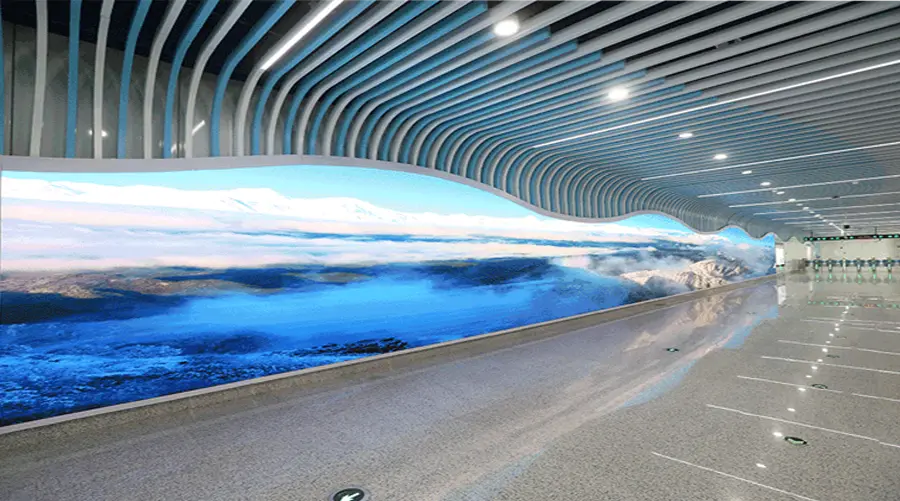
Subway environments pose unique challenges, such as vibrations, humidity, and frequent maintenance. Modern subway LED advertising display screens are engineered to address these issues while delivering exceptional performance. Key features include:
Ultra-High Brightness: Ranging from 1,500 to 2,500 nits, ensuring visibility in poorly lit tunnels and underground stations.
Wide Viewing Angles: Up to 160° horizontal and vertical angles for optimal visibility from all directions.
IP65 Rating: Dust and water-resistant enclosures protect against subway-specific conditions like moisture and dust accumulation.
Modular Design: Panels can be configured into curved walls, escalator wraps, or portable setups for flexibility.
Remote Content Management: Cloud-based CMS allows advertisers to update campaigns instantly without on-site visits.
For instance, a subway system in London uses modular LED panels to create a 12-meter curved display on its central platform, showcasing live sports events during peak hours. The screens’ IP65 rating ensures durability despite frequent foot traffic and cleaning cycles.
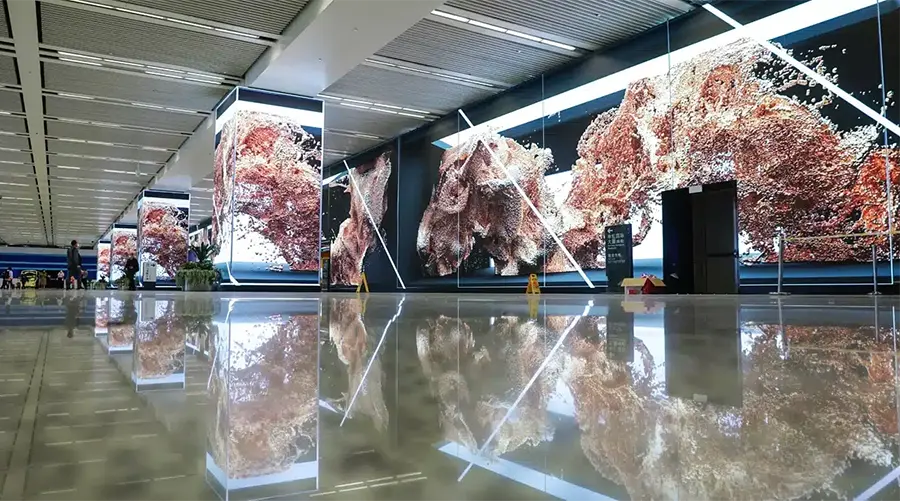
While advertising remains the primary use case, subway LED advertising display screens serve a broader range of functions that enhance commuter experiences:
Public Safety: Emergency alerts, evacuation maps, and security camera feeds displayed in real time.
Wayfinding: Interactive route maps and train schedules reduce passenger confusion and improve navigation.
Entertainment: News updates, music playlists, and local event promotions keep passengers engaged during waits.
Interactive Polls: Touch-enabled screens allow commuters to vote on local issues or share feedback with transit authorities.
Art Installations: Collaborations with artists to project digital murals or rotating exhibits on station walls.
A notable example is the Paris Métro, which partners with local artists to showcase digital art on LED screens during off-peak hours. This initiative not only beautifies the stations but also fosters community engagement. Similarly, New York City’s subway system uses LED screens to broadcast live weather updates and traffic conditions, helping commuters plan their journeys effectively.
Proper installation is critical for maximizing the performance and lifespan of subway LED advertising display screens. Key considerations include:
Structural Integration: Mounting screens on ceilings, pillars, or escalator frames without obstructing pedestrian flow.
Power and Connectivity: Redundant power sources and fiber-optic cables for uninterrupted operation during outages.
Environmental Protection: Anti-vibration mounts and sealed enclosures to withstand subway-specific stresses.
Content Scheduling: Using AI-driven analytics to optimize ad placement based on passenger density and dwell time.
For example, a major European city installed LED screens on escalators using custom brackets designed to absorb vibrations from train movements. The screens are powered by energy-efficient inverters and connected to a centralized CMS for real-time content updates. Such solutions ensure reliability while minimizing maintenance costs.
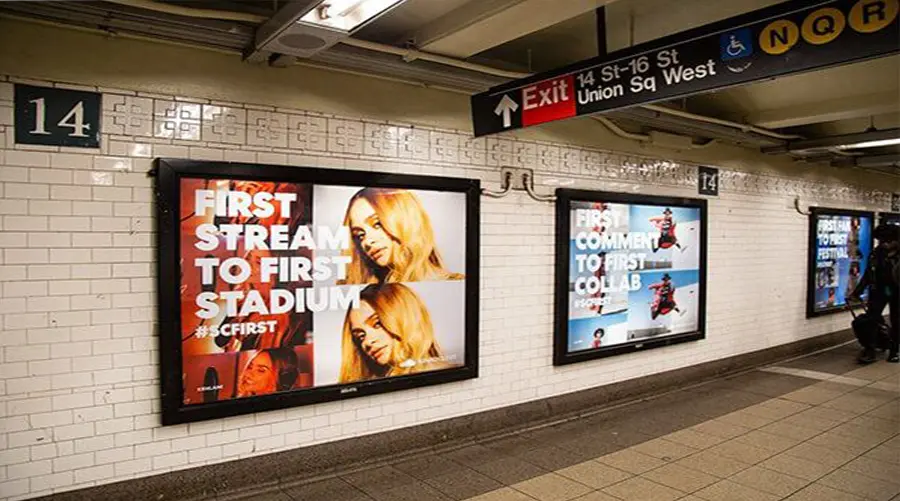
The cost of subway LED advertising display screens varies based on size, resolution, and installation complexity. Below is a general breakdown of expenses and potential returns:
| Screen Type | Pixel Pitch | Cost per m² (USD) | Best Use |
|---|---|---|---|
| Platform LED Screen | P2.5–P5 | $1,500–$3,000 | Advertising and announcements |
| Train Interior Screen | P2–P3 | $2,000–$3,500 | Compact ads inside trains |
| Escalator LED Screen | P2.5–P4 | $1,800–$3,200 | Eye-level advertising |
| Entrance Billboard | P4–P8 | $2,500–$5,000 | Outdoor or semi-outdoor displays |
For a 10m² platform screen with P3 resolution, the estimated cost ranges from $15,000 to $30,000. However, the ROI is significant: advertisers report a 40% increase in brand recall for campaigns run on subway LED screens compared to traditional billboards. Additionally, transit authorities can generate revenue by leasing screen space to sponsors, creating a sustainable funding model for infrastructure upgrades.
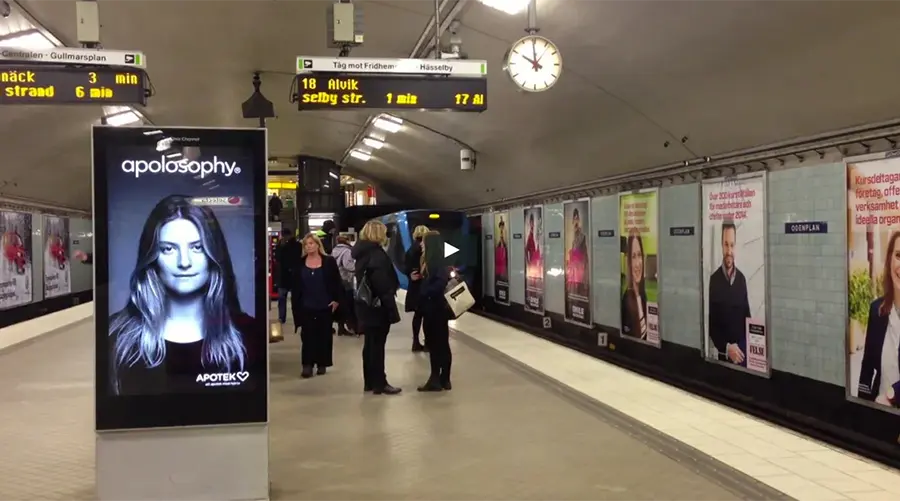
The evolution of subway LED advertising display screens is driven by advancements in AI, IoT, and sustainability. Emerging trends include:
Smart LED Screens: AI-powered analytics adjust ad content based on real-time passenger behavior and preferences.
Augmented Reality (AR) Integration: Overlay virtual information onto physical environments for interactive wayfinding or gamified ads.
Flexible and Rollable Designs: Curved or foldable screens for unconventional spaces like tunnels or curved station walls.
Solar-Powered Solutions: Solar panels integrated into screen enclosures to reduce reliance on grid electricity.
Biodegradable Materials: Eco-friendly substrates and coatings to minimize electronic waste.
In the near future, commuters may see AR-enhanced LED screens that project personalized travel tips or virtual tours of nearby attractions. For example, a passenger waiting at a station could use their smartphone to scan a QR code on an LED screen, unlocking exclusive discounts or event tickets. These innovations will further blur the line between physical and digital experiences in urban transit.
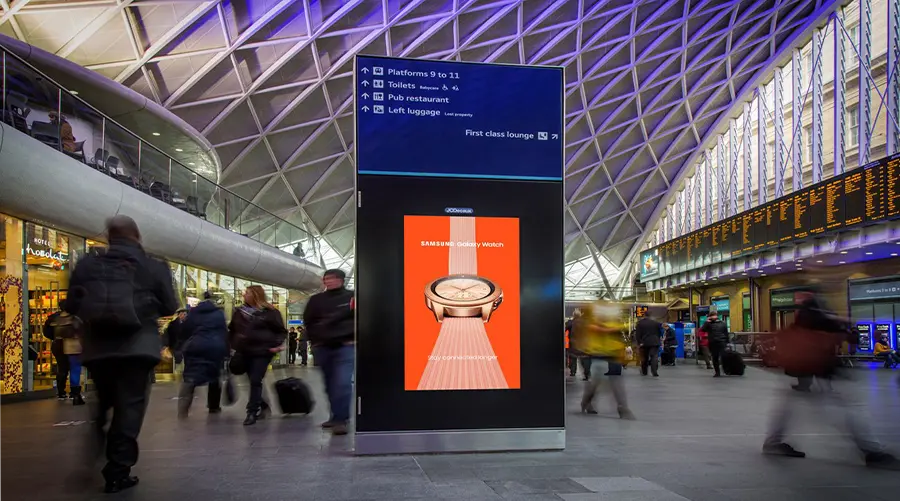
Subway LED advertising display screens are transforming urban commutes by combining functionality with creativity. From real-time public service announcements to immersive advertising campaigns, these screens enhance the efficiency, safety, and enjoyment of subway travel. As technology advances, we can expect even more innovative applications that cater to the needs of both passengers and advertisers.
For cities and transit authorities, investing in LED technology is not just about modernization—it’s about creating smarter, more connected urban ecosystems. Whether you’re a business looking to reach a captive audience or a municipality aiming to improve commuter satisfaction, subway LED displays offer a scalable, cost-effective solution for the future.
Ready to elevate your subway advertising strategy? Contact us today to discuss customized subway LED advertising display screen solutions tailored to your needs.
Hot Recommendations
Hot Products
Get a Free Quote Instantly!
Talk to Our Sales Team Now.
If you are interested in our products, please contact us promptly
Reach out to our sales team to explore customized solutions that perfectly meet your business needs and address any questions you may have.
Email Address:info@reissopto.comFactory Address:Building 6, Huike Flat Panel Display Industrial Park, No. 1, Gongye 2nd Road, Shiyan Shilong Community, Bao'an District, Shenzhen city , China
whatsapp:+8615217757270